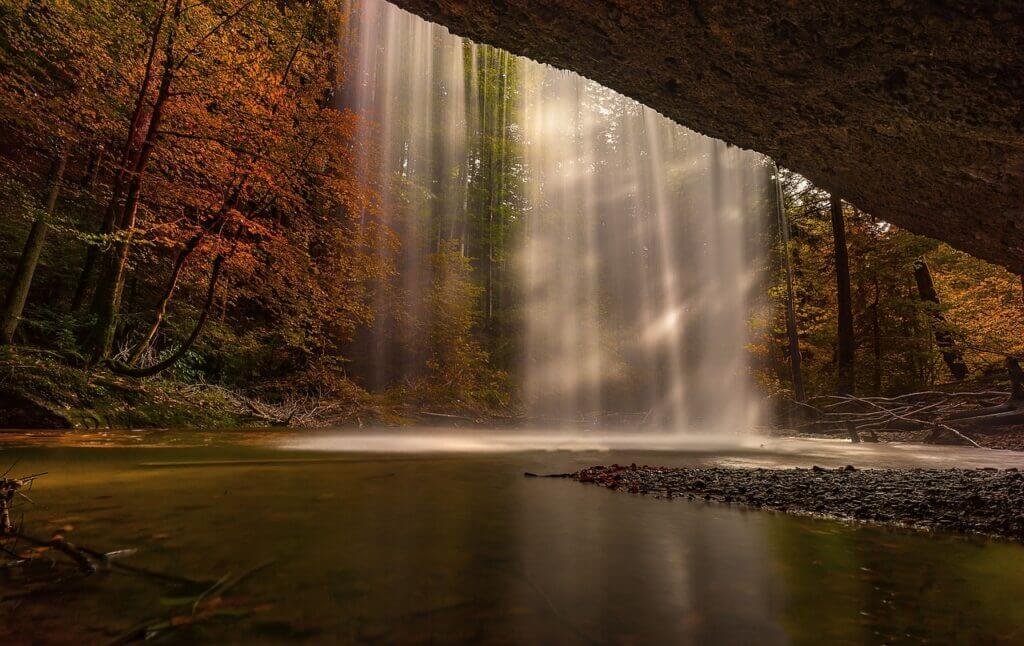Heading out into the wilderness for a camping trip can be an exhilarating and refreshing experience. The vast open spaces, fresh air, and stunning natural beauty are enough to entice anyone. However, it’s crucial to remember that the wilderness can also be quite unpredictable and potentially dangerous, making safety precautions an absolute necessity. In this article, we will discuss the essential safety measures you should take to ensure a safe and enjoyable camping adventure in the wilderness. From wildlife encounters to campfire safety, we’ve got you covered. So, pack your gear, put on your hiking boots, and let’s dive into the world of wilderness camping safety!

Planning and Preparation
Choose a Suitable Campsite
When planning a camping trip in the wilderness, it is crucial to choose a suitable campsite. Look for a location that is level and free from any potential hazards such as dead trees or overhanging branches. Consider the proximity to water sources, as well as the availability of shade. Additionally, ensure that the campsite offers enough space for setting up tents and other camping equipment comfortably.
Check Local Regulations and Weather Conditions
Before heading out on your camping adventure, it is essential to check the local regulations and weather conditions. Familiarize yourself with any permits or camping restrictions that may be in place for the area you plan to visit. Furthermore, monitor the weather forecast to prepare for any potential storms or extreme weather that could pose risks during your trip. Staying informed about local regulations and weather conditions will help you make informed decisions and ensure your safety.
Inform Someone about Your Trip
Always inform someone reliable about your camping trip, especially if you are venturing into the wilderness on your own. Let them know the location and duration of your trip, as well as any emergency contact information they may need. This way, if you encounter any difficulties or fail to return on time, someone will be aware of your situation and can assist in case of an emergency.
Pack Essential Gear and Supplies
When preparing for a camping trip in the wilderness, packing the right gear and supplies is crucial for your safety and comfort. Some essential items to include are a tent, sleeping bags, cooking utensils, food, water, a first aid kit, flashlight, extra batteries, and a multi-tool. It is also advisable to pack extra clothing, a waterproof jacket, sturdy footwear, insect repellent, sunscreen, and a hat. Always ensure that your gear is in good condition and functioning properly before setting off on your adventure.
Campsite Safety
Set Up Camp Away from Potential Hazards
When setting up your campsite, it is important to choose a safe location away from potential hazards. Be mindful of dead trees, unstable rocks, or overhanging branches that could pose risks if they were to fall. Look for a level area that is free from ant hills, undergrowth, or any other potential tripping hazards. By selecting a campsite away from hazards, you will decrease the likelihood of accidents or injuries.
Keep the Campsite Clean and Organized
Maintaining a clean and organized campsite is not only essential for your comfort but also for your safety. Keep your camping area tidy by properly disposing of any garbage or food waste. Picking up litter and storing your gear neatly will help prevent accidents caused by trips and falls. Additionally, organizing your camping equipment and supplies will make it easier for you to find what you need and minimize the risk of items getting lost or damaged.
Secure Food and Toiletries to Prevent Animal Intrusions
In the wilderness, it is important to secure your food and toiletries properly to prevent animal intrusions. Store all food items in bear-resistant containers or hang them high in trees away from your sleeping area. Avoid bringing scented items, such as perfumes or lotions, into your tent, as they can attract curious wildlife. Properly dispose of any food waste and toiletries in designated containers, away from the campsite, to discourage animals from approaching your camp.

Wildlife Safety
Learn About Wildlife in the Area
Before camping in the wilderness, take the time to research and learn about the wildlife in the area. Familiarize yourself with the types of animals that may inhabit the region, their habits, and the precautions you should take to avoid conflicts. Understanding wildlife behavior will help you make informed decisions and reduce the risk of any unwanted encounters.
Properly Store Food and Dispose of Waste
When camping in the wilderness, it is essential to properly store food and dispose of waste to minimize the risk of attracting wildlife. Store all food securely in bear-resistant containers or hang it high in trees away from your campsite. Dispose of food waste and other trash in designated containers, ensuring they are securely closed. Avoid leaving any food scraps or wrappers lying around the campsite, as they may attract unwanted wildlife.
Avoid Feeding or Approaching Wildlife
While encountering wildlife can be an exciting experience, it is important to resist the temptation to feed or approach them. Feeding wildlife disrupts their natural behavior and can lead to dependency on human food, which poses risks for both the animals and campers. Maintain a safe distance and observe wildlife from afar, allowing them to carry on their natural activities undisturbed.
React Calmly in Wildlife Encounters
In the event of a wildlife encounter, it is crucial to remain calm and follow the appropriate safety protocols. Do not run or make sudden movements that might startle the animal. Back away slowly, keeping your eyes on the animal without making direct eye contact. If the animal charges or behaves aggressively, try to make yourself appear larger by raising your arms and making loud noises to deter it. Remember, never approach or corner wildlife, as this can lead to dangerous situations.
Carry Bear Spray or Other Appropriate Wildlife Deterrents
When camping in areas known for bears or other potentially dangerous wildlife, it is advisable to carry bear spray or other appropriate wildlife deterrents. Bear spray is a non-lethal deterrent that can help deter bears in the event of a close encounter. Ensure that you know how to use the bear spray effectively and keep it easily accessible. Research the wildlife in the area before your trip to determine any specific precautions or deterrents that may be necessary.
Fire Safety
Check Fire Regulations and Restrictions
Before starting a campfire, always check the fire regulations and restrictions in the area you are camping. Some locations may have specific rules regarding the use of campfires or may prohibit them entirely, especially during dry seasons or high fire risk periods. It is crucial to respect these regulations to prevent wildfires and ensure the safety of the surrounding wilderness and other campers.
Follow Safe Campfire Practices
When starting a campfire, it is essential to follow safe practices to minimize the risk of accidents and wildfires. Choose a designated fire pit if available and clear the area around it from any flammable materials. Keep the fire small, manageable, and contained within the fire pit. Always have water or a fire extinguisher nearby to quickly extinguish the fire if necessary. Never leave the campfire unattended and ensure it is fully extinguished before leaving the site or going to bed.
Keep Fire Extinguishers and Water Sources Close
To ensure fire safety at your campsite, always keep fire extinguishers and water sources close by. Have a fully charged fire extinguisher readily available in case of emergencies, and make sure you know how to operate it. Additionally, keep a bucket of water or a hose nearby to quickly douse any flames that may escape the fire pit or sparks that could ignite nearby vegetation. Being prepared with fire suppressants will help you respond promptly and effectively in case of a fire-related incident.
Never Leave Fires Unattended
One of the most crucial fire safety rules when camping in the wilderness is to never leave fires unattended. Even for a brief moment, leaving a fire unsupervised can result in uncontrollable spread or accidental ignitions. It is essential to assign someone to watch over the fire at all times. If the fire needs to be left temporarily, ensure it is fully extinguished, with no remaining embers or hot coals, before leaving the campsite or going to sleep.

Water Safety
Ensure a Reliable Water Source
When camping in the wilderness, it is vital to ensure a reliable water source for drinking, cooking, and cleaning. Research the area ahead of time to identify nearby water sources such as streams, lakes, or rivers. If possible, choose a campsite in close proximity to a reliable water source to minimize the need for excessive carrying or filtration.
Treat or Filter Water to Make It Safe for Drinking
Even if the water source appears clean, it is essential to treat or filter the water before consuming it. Various methods, such as boiling, using water filters, or chemical water treatments, can effectively make water safe for drinking. Follow the manufacturer’s instructions and use an appropriate method to ensure the removal of harmful bacteria, parasites, and other contaminants. Prioritize the safety of your water supply to prevent waterborne illnesses during your camping trip.
Store Water Properly to Prevent Contamination
Properly storing water is crucial to prevent contamination and ensure its safety for drinking and cooking. Use clean, food-grade containers with tight-fitting lids to store water. Keep the containers away from direct sunlight and chemicals. Additionally, avoid cross-contamination by using separate containers for drinking water and non-potable water, such as water for cleaning or washing dishes. Regularly inspect the containers for any signs of damage or leakage to maintain the integrity of the stored water.
Avoid Camping Near Flood Zones or Fast-Flowing Rivers
When selecting a campsite, it is important to avoid camping near flood zones or fast-flowing rivers. These areas can pose significant risks, especially during heavy rains or flash floods. Choose a campsite that is situated on higher ground and away from potential danger zones. By avoiding flood-prone areas and fast-flowing rivers, you can minimize the risk of being caught in dangerous situations arising from swift currents or rising water levels.
Weather Safety
Monitor Weather Conditions
Monitoring weather conditions is crucial when camping in the wilderness, as it allows you to prepare for potential risks and ensure your safety. Prior to and during your trip, regularly check local weather forecasts. Be aware of any predicted storms, high winds, or extreme temperatures that may pose hazards to campers. Stay informed and adjust your plans accordingly to avoid putting yourself in risky situations.
Be Prepared for Extreme Weather
While camping in the wilderness, it is essential to be prepared for extreme weather conditions that may arise. Pack appropriate clothing and gear to protect yourself from cold temperatures, heavy rain, or intense heat. Avoid cotton clothing, as it retains moisture and can lead to hypothermia if wet. Instead, opt for synthetic or wool clothing that wicks away moisture and keeps you warm even when damp. Additionally, always carry a waterproof jacket, extra layers, and a hat to shield yourself from the elements.
Seek Shelter in Case of Thunderstorms or Heavy Winds
During thunderstorms or heavy winds, it is crucial to seek shelter to protect yourself from potential dangers. Avoid open areas, tall trees, or exposed ridgelines that may attract lightning strikes or be prone to falling branches. Seek the lowest point in the terrain, such as a valley or a depression, while avoiding areas that may flood. If caught outside, crouch down on your toes, minimizing your contact with the ground, and avoid seeking shelter under isolated trees or overhangs.
Navigation and Communication
Carry a Map and Compass
When exploring the wilderness, it is essential to carry a map and compass to navigate your surroundings. Familiarize yourself with the map and identify prominent features, trails, and landmarks. Use the compass to orient yourself and determine your direction of travel. Even if you rely on modern navigation tools, always carry a map and compass as a backup in case of technical failures or battery depletion.
Use GPS or Navigation Apps as Backup
While traditional navigation tools such as maps and compasses are reliable, modern technology can also be used as a backup for navigation. Carry a GPS device or download a navigation app on your mobile phone to supplement your navigation skills. However, be aware that these devices may not always be accurate or reliable, so it is essential to understand how to use them effectively alongside traditional navigation methods.
Establish a Communication Plan
Before embarking on a camping trip in the wilderness, establish a communication plan with your camping companions or someone back home. Determine how often you will check in and what method of communication you will use. Agree on a timeframe within which an emergency signal should be triggered if someone fails to check in as planned. Maintaining communication helps ensure your safety and allows for prompt assistance in case of emergencies.
Bring Backup Power Sources for Communication Devices
To ensure uninterrupted communication, bring backup power sources for your communication devices. These may include spare batteries, portable chargers, or solar-powered chargers. Make sure to fully charge your devices and power sources before your trip. Additionally, conserve the battery life of your devices by minimizing unnecessary usage and keeping them in power-saving modes when not in use.
First Aid and Emergency Preparedness
Pack a Comprehensive First Aid Kit
A comprehensive first aid kit is a crucial item to have when camping in the wilderness. Your first aid kit should include essentials such as adhesive bandages, sterile gauze pads, antiseptic wipes, medical tape, scissors, tweezers, pain relievers, and any necessary prescription medications. Additionally, consider including items specific to the activities you plan to engage in, such as blister treatment, burn cream, or insect repellent. Regularly check and replenish your first aid kit to ensure its contents are up to date and in good condition.
Learn Basic First Aid Skills
Having a well-stocked first aid kit is not enough; it is also important to learn basic first aid skills. Familiarize yourself with techniques for treating common injuries such as cuts, sprains, burns, and insect bites. Enroll in a certified first aid course or seek guidance from medical professionals to gain the necessary knowledge and skills. Being prepared to administer first aid can make a significant difference in managing emergencies and minimizing the impact of injuries.
Know the Location of Nearest Medical Facilities
Before setting off on your camping trip, identify the location of the nearest medical facilities, including hospitals, urgent care centers, or ranger stations. In remote areas, medical assistance may not be readily available, so knowing the nearest options can prove invaluable in case of emergencies. Additionally, program emergency contact numbers into your phone and carry a list of important numbers on your person in case of limited or no cellular reception.
Familiarize Yourself with Emergency Procedures
It is important to familiarize yourself with emergency procedures and protocols relevant to the area you are camping in. Research the specific risks and hazards associated with the wilderness location, such as wildlife encounters, flash floods, or landslides. Educate yourself on the appropriate actions to take in these situations to ensure your safety. Stay calm and follow the established emergency procedures to maximize your chances of a successful outcome.
Personal Safety
Wear Appropriate Clothing and Footwear
To ensure personal safety when camping in the wilderness, wear appropriate clothing and footwear. Dress in layers to adapt to changing weather conditions and avoid overheating or hypothermia. Choose clothing made of synthetic or wool materials that wick away moisture and dry quickly. Proper footwear should provide support, traction, and protection, reducing the risk of slips, falls, or injuries on rugged terrain.
Protect Yourself from Sunburn and Insects
Protecting yourself from sunburn and insects is crucial for your comfort and safety. Apply sunscreen with a high SPF to exposed skin, even on cloudy days, to protect against harmful UV rays. Wear a hat and sunglasses to shield your face and eyes from the sun’s intense rays. Additionally, apply insect repellent to deter mosquitoes, ticks, and other biting insects that may carry diseases. Wearing long-sleeved shirts and long pants can provide an additional barrier against insect bites.
Use Proper Lifting Techniques
When handling heavy camping equipment or lifting objects in the wilderness, it is important to use proper lifting techniques to prevent injuries. Bend at the knees and use your leg muscles to lift, rather than putting strain on your back. Keep the object close to your body and maintain a stable center of gravity. Avoid twisting your body while carrying heavy loads, as this can lead to muscle strains or sprains.
Be Mindful of Your Surroundings
Maintaining awareness of your surroundings is crucial for your personal safety when camping in the wilderness. Be mindful of your surroundings at all times to avoid potential hazards or encounters with wildlife. Stay alert for signs of changing weather conditions, such as darkening skies or strong winds, and seek shelter if necessary. By staying aware and proactive, you can prevent accidents and ensure a safe and enjoyable camping experience.
Campfire Safety
Practice Proper Campfire Etiquette
When enjoying a campfire in the wilderness, it is important to practice proper campfire etiquette. Respect the environment by using designated fire pits or established fire rings, if available. Avoid building new fire pits or altering existing ones. Use only dead, fallen wood for your campfire, never cutting or damaging live trees. Additionally, be considerate of other campers by keeping your fire reasonably-sized and minimizing smoke that may disrupt nearby campsites.
Keep a Safe Distance from the Fire
Maintaining a safe distance from the fire is crucial to prevent accidents and burns. Teach children to keep a safe distance and supervise them at all times around the campfire. Set up chairs or seating areas at an appropriate distance from the fire pit to prevent accidental contact with flames or sparks. Be mindful of loose clothing or dangling sleeves that could catch fire and keep them away from open flames.
Extinguish Fires Completely before Leaving
Before leaving your campsite or going to bed, it is essential to fully extinguish your campfire to prevent wildfires. Drown the fire with water, ensuring all embers are completely extinguished. Stir the ashes with a shovel or stick to expose any remaining hot spots and repeat the process until all materials have cooled down. Dispose of the cooled ashes in designated fire pits or containers, avoiding leaving any fire residue that could potentially reignite.
By following these safety precautions for camping in the wilderness, you can ensure a safe and enjoyable outdoor experience. Remember, preparation, knowledge, and responsible actions are key to maintaining your safety and preserving the natural environment. So, pack your gear, plan your trip, and embark on an adventure, knowing that you are fully prepared to handle any situation that may arise.


